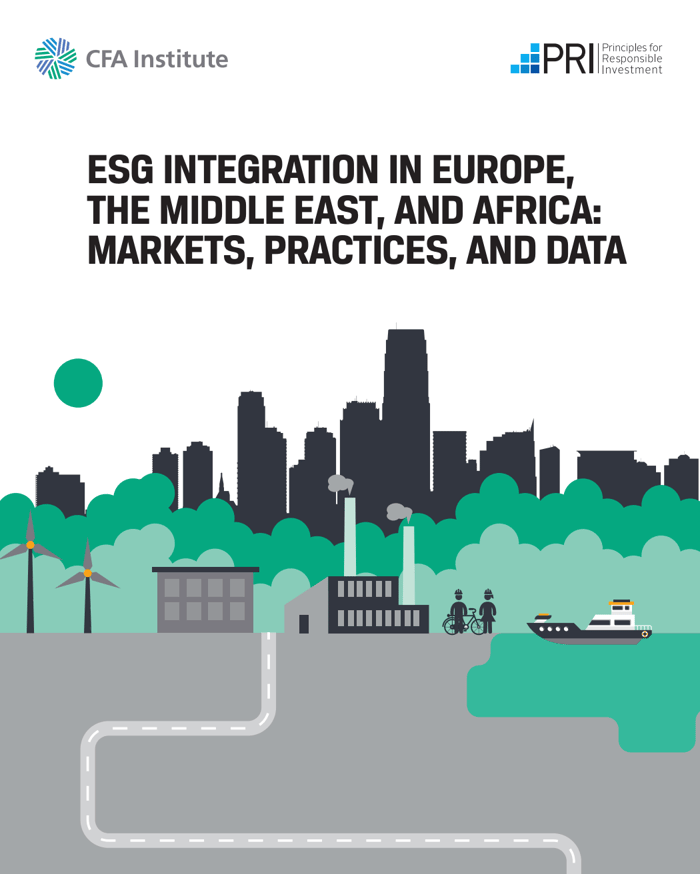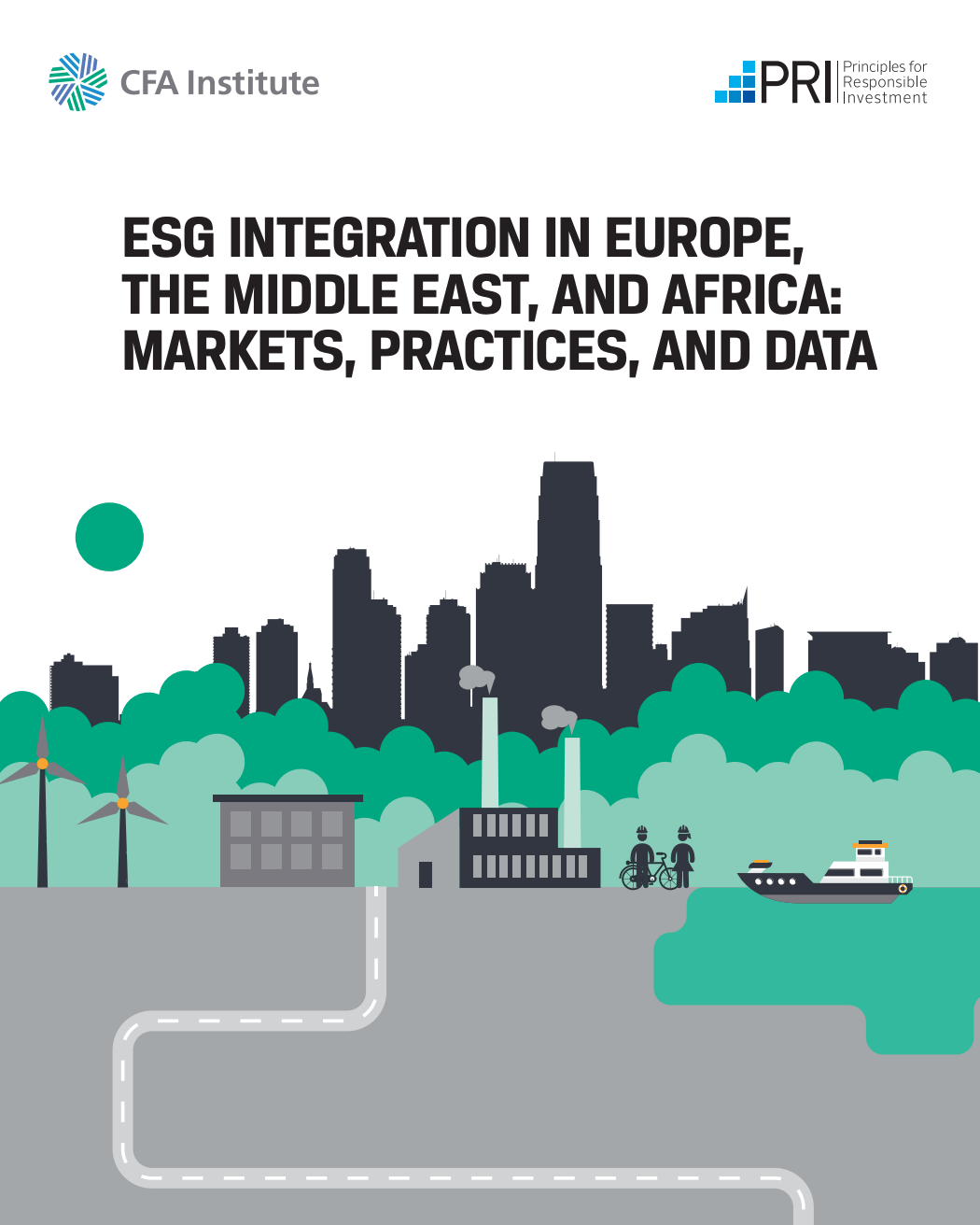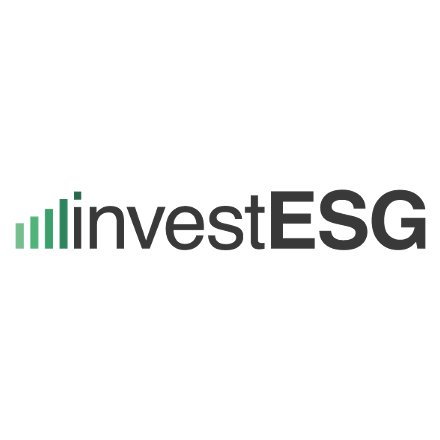
 Download here: https://www.cfainstitute.org/en/research/survey-reports/esg-integration-emeaThere is no “one best way” to do ESG integration and no “silver bullet” to ESG integration.
Download here: https://www.cfainstitute.org/en/research/survey-reports/esg-integration-emeaThere is no “one best way” to do ESG integration and no “silver bullet” to ESG integration.- Investors should focus on ESG analysis, not ESG investing. ESG investing is often used as a marketing slogan, whereas ESG analysis is a fundamental part of investment analysis and requires a disciplined and tangible approach to be fully integrated into the investment process.
- Governance is the ESG factor most investors are incorporating into their process. Although environmental and social factors are gaining acceptance, they are starting from a low base.
- ESG integration is more advanced in equities than fixed income.
- Although portfolio managers and analysts are more frequently incorporating ESG into the investment process, they rarely adjust their models based on ESG data.
- The main drivers of ESG integration are risk management and client demand; the main barriers to ESG integration include a limited understanding of ESG issues and a lack of comparable ESG data.
Methodology
In preparing these reports, we collected data from several sources, including:
- an ESG integration survey of 1,100 financial professionals, predominantly CFA Institute members. The survey ran from September 2017 to July 2018;
- workshops organized by CFA Institute, PRI, and 23 CFA® Societies that ran from October 2017 to April 2018;
- Bloomberg, which contributed two datasets—equity and fixed income—of its ESG disclosure scores for 17 markets; and
- PRI’s 2017 reporting framework, which collates the ESG practices of practitioners around the world.
- France (n=37);
- Germany (n=79);
- Italy (n=35) (Note: No separate chapter on Italy);
- The Netherlands (n=59);
- Russia (n=35);
- South Africa (n=43);
- Switzerland (n=51);
- The United Kingdom (n=51); and
- The United Arab Emirates (n=2).

